Last week, MET Labs hosted a joint meeting of the Central Texas Chapter of the IEEE EMC Society and the Central Texas Chapter of the IEEE Product Safety Engineering Society. The feature presentation – “Ten Things You Must Know about NEBS” – was a topic of interest to both groups.
The Network Equipment Building System (NEBS) testing presentation was introductory in nature, but featured some information that we thought would be interesting to Compliance Today readers:
Cost Versus Schedule
The more samples provided, the quicker the testing process. On the flip side, the more samples provided, the higher the test costs. The telecom equipment manufacturer needs to submit to the test lab the optimal number of samples to balance speed and cost.
Plan on a minimum of three units for the NEBS test cycle:
- One for GR-63-CORE
- One for GR-1089-CORE
- One for second level lightning, AC power fault, and fire resistance tests
Flame Testing
GR-63-CORE requires that a product be set on fire from the inside. A methane line burner (simulating a burning line card) is inserted into the product and allowed to burn for 330 seconds.
This test should be performed first on a unit that is populated with the correct fuel load. The mechanism for the normal operation of the fans should be engaged and the unit should be fully cabled as well.
Seismic Testing
The NEBS seismic test simulates about an 8.2 Richter Scale earthquake. Equipment must be operational before and after the test. The objective is the equipment is operational during the test.
EMC Testing
GR-1089-CORE specifies electromagnetic compatibility (EMC) testing requirements.
Section 2 covers electrostatic discharge (ESD) and electrical fast transients (EFT). ESD testing is performed at 4 kV and 15 kV air and 8 kV contact.
Section 3 covers electromagnetic interference (EMI). A NEBS product must pass radiated and conducted emissions tests as well as radiated and conducted immunity tests. The frequency range for radiated emissions and immunity is 10 kHz to 10 GHz.
Section 4 covers lightning and AC power fault requirements. Even if the product doesn’t have any signals going to outside plant (OSP), there are still intra-building surge and power-cross events that must be addressed.
Section 5 covers steady-state power induction. This affects network equipment interfacing with OSP.
Additional RBOC Requirements
Each Regional Bell Operating Company (RBOC) has its own requirements beyond GR-63 and GR-1089.
Verizon has stricter pass criteria for fire resistance and has its own guidelines for some of the EMC requirements. Verizon also has specifications for hazardous substances (RoHS), energy efficiency (TEEER), and thermal modeling (TMST).
AT&T has its own requirements for DC power and energy efficiency (TEER).
Qwest also has unique requirements.
Read more on NEBS testing requirements, and Verizon NEBS compliance.
